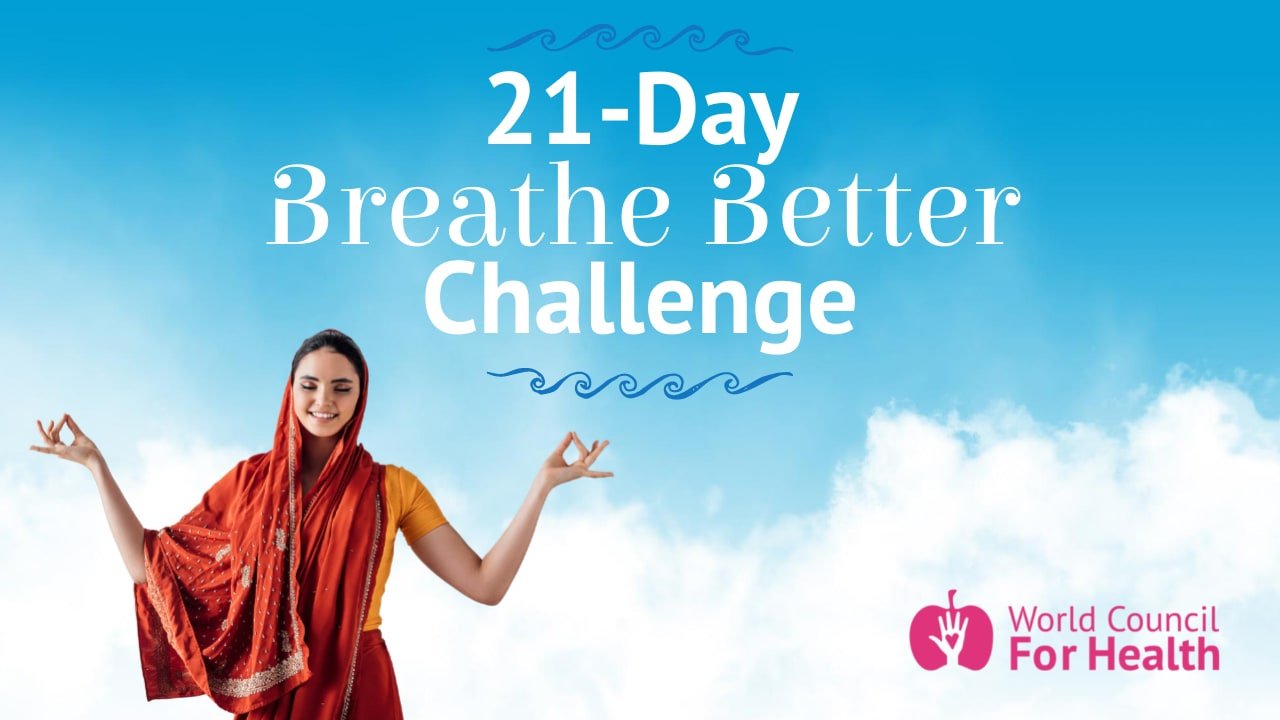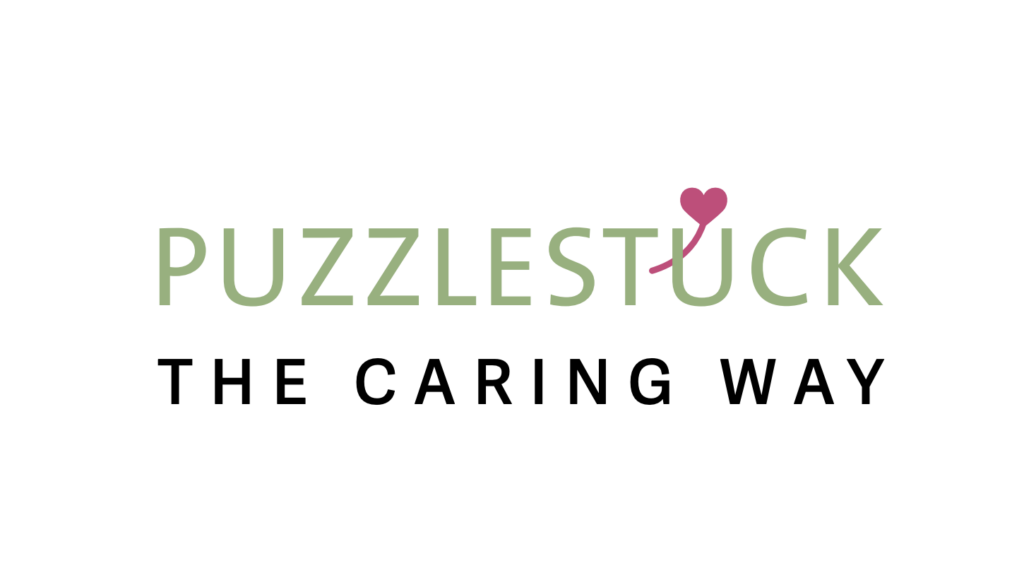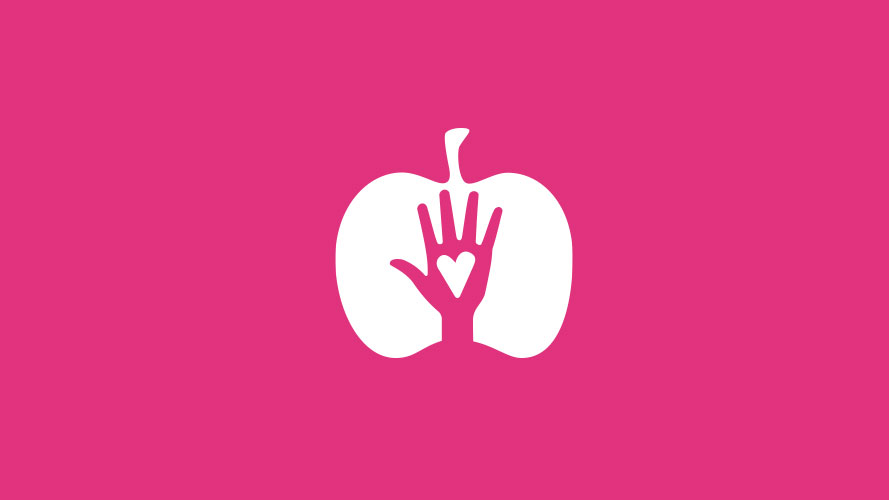To be alive is to breathe. One of the very first things we do when we enter the world is inhale. We breathe countless times a day, and—despite its incredible importance—we likely don’t often give it a second thought.
While it may feel as though your current breathing practice works well enough—after all, you are alive and reading this challenge—there is always room to learn more and make changes that allow you to breathe better.
The importance of breath has been acknowledged for time immemorial but, like many things, we have found ourselves distracted and disconnected by our busy, modern lives. From qi (Chinese) to prana (Hindu) and from pneuma (Greek) to rûah (Hebrew), breath has been a central and vital part of humanity.
We know that emotions affect the body, but our bodies can likewise affect our emotions. A calm body and brain, which can be achieved by accessing specific breathing techniques, can be effective against anxiety, insomnia, pain, and so much more. In fact, challenging yourself to simply breathe better can change your life.
In July 2022, the World Council for Health hosted a 21-day virtual breathing challenge. All of the daily prompts are available below including the science to back them up. We invite you to embark on this challenge yourself, with a friend, or with a larger group once, twice, or multiple times throughout the year. It’s ok if you don’t like each of these techniques—it is our hope that you will enjoy exploring and will discover a few breathing techniques that will help you learn to Breathe Better now and into the future.
The Breathe Better 21-Day Challenge
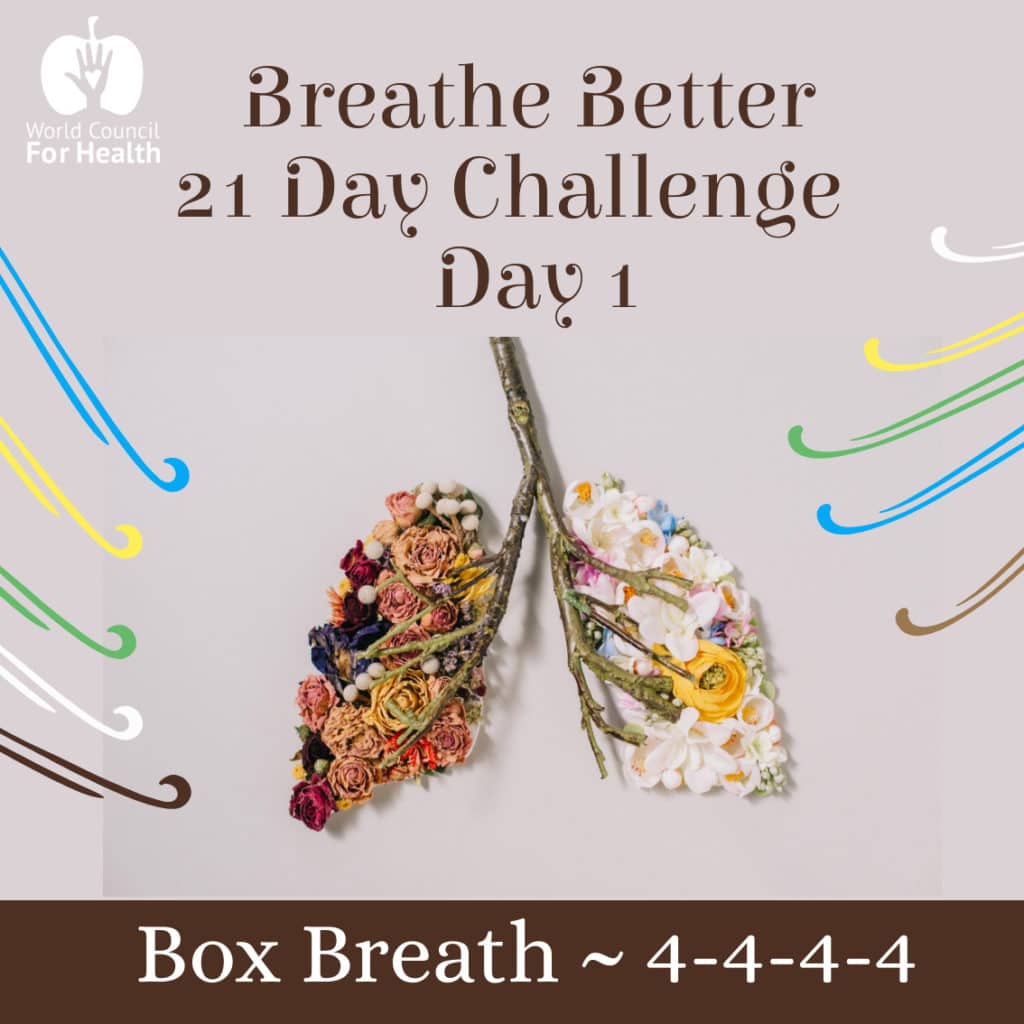
The Science: This technique is great for stress reduction and is used by athletes around the world. It was developed by Mark Divine, a former Navy SEAL commander.
Preparation: Sit in a comfortable position with a straight back and slowly breathe all of the air out of your lungs.
Technique:
- Slowly breathe in through your nose for a count of 4. Focus on the feeling of air filling your lungs.
- Hold your breath for a count of 4.
- Breathe out through your mouth for a third count of 4. Pay attention to the sensation of the air leaving your body.
- Hold your breath again for a final count of four.
- Repeat. We suggest 10-20 sets.
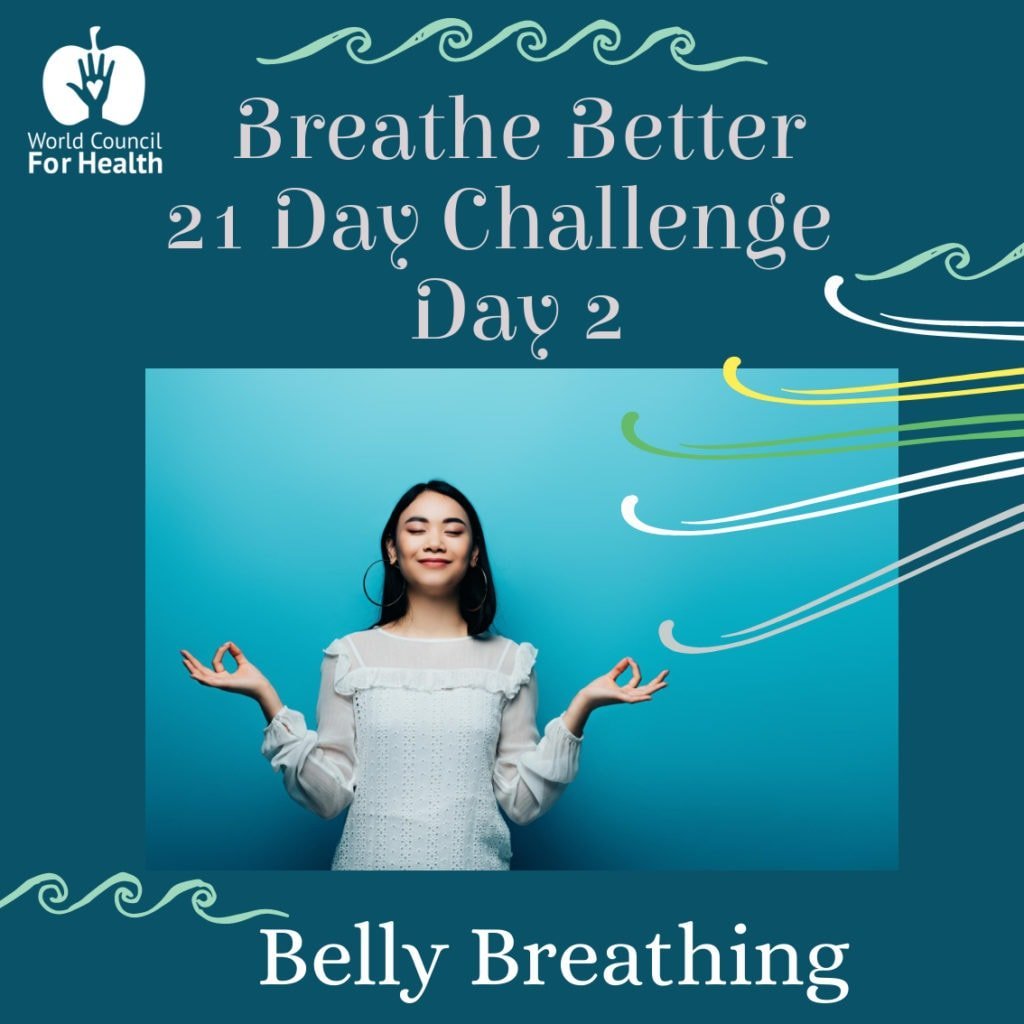
The Science: Studies have shown that this technique leads to an increase in focus and a decrease in negative emotions. Conscious belly breathing allows more oxygen to come into your lungs and brings us back to our original state of being.
Preparation: Sit or lie in a comfortable position and close your eyes.
Technique:
- Put one hand on your chest and one on your belly.
- Slowly breathe in and focus on bringing the breath down to the belly. Try to keep the rest of your body relaxed and your chest still. It should just be the belly slowly moving in and out.
- Breathe out through your mouth slowly and feel your stomach fall.
- Repeat 15 times.
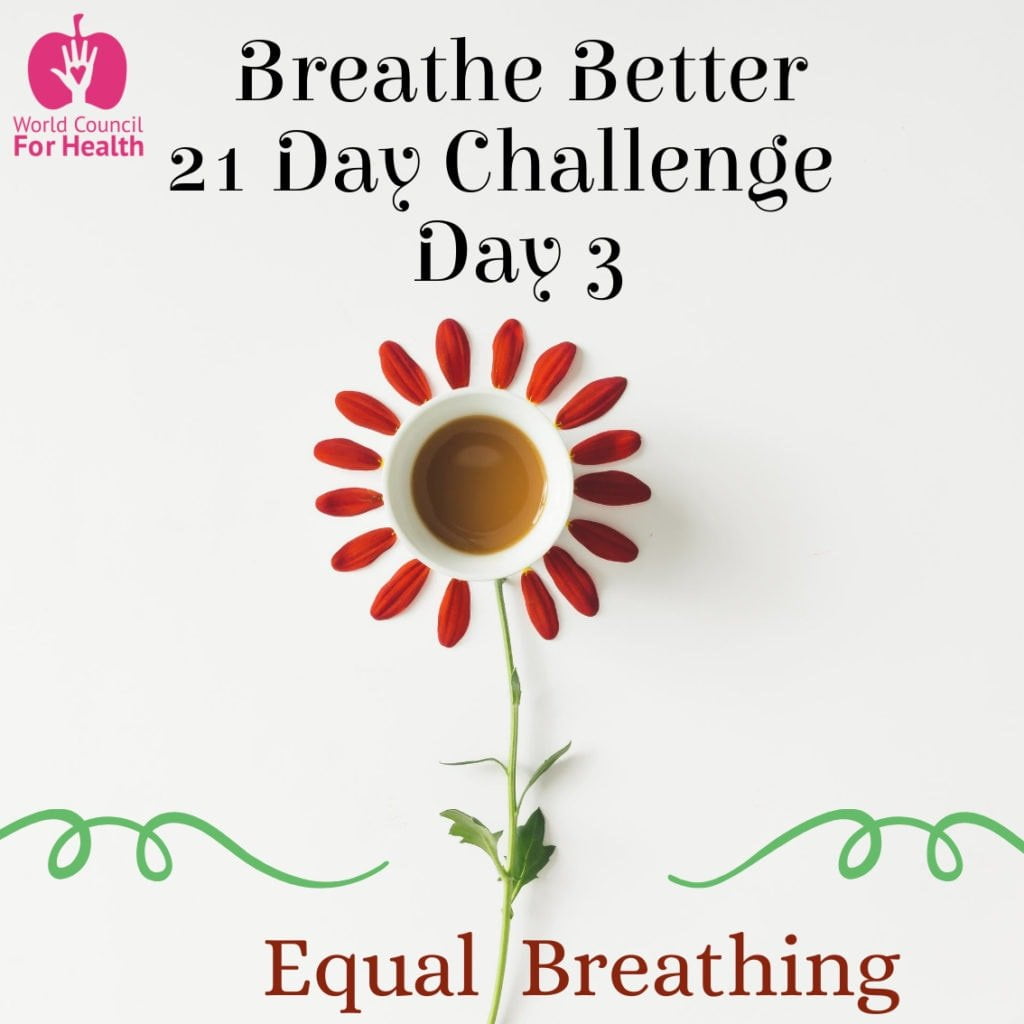
The Science: Equal breathing engages your parasympathetic nervous system, which helps you to achieve relaxation. Many use it if they are struggling to get to sleep.
Preparation: Sit down in a comfortable position.
Technique:
- Breathe in and out through your nose.
- Count your inhale and make sure your exhale last the same count. E.g if your inhale is 5 seconds, make your exhale 5 seconds also.
- You can take a short pause between each inhale and exhale if this is helpful
- Repeat for as long as desired.
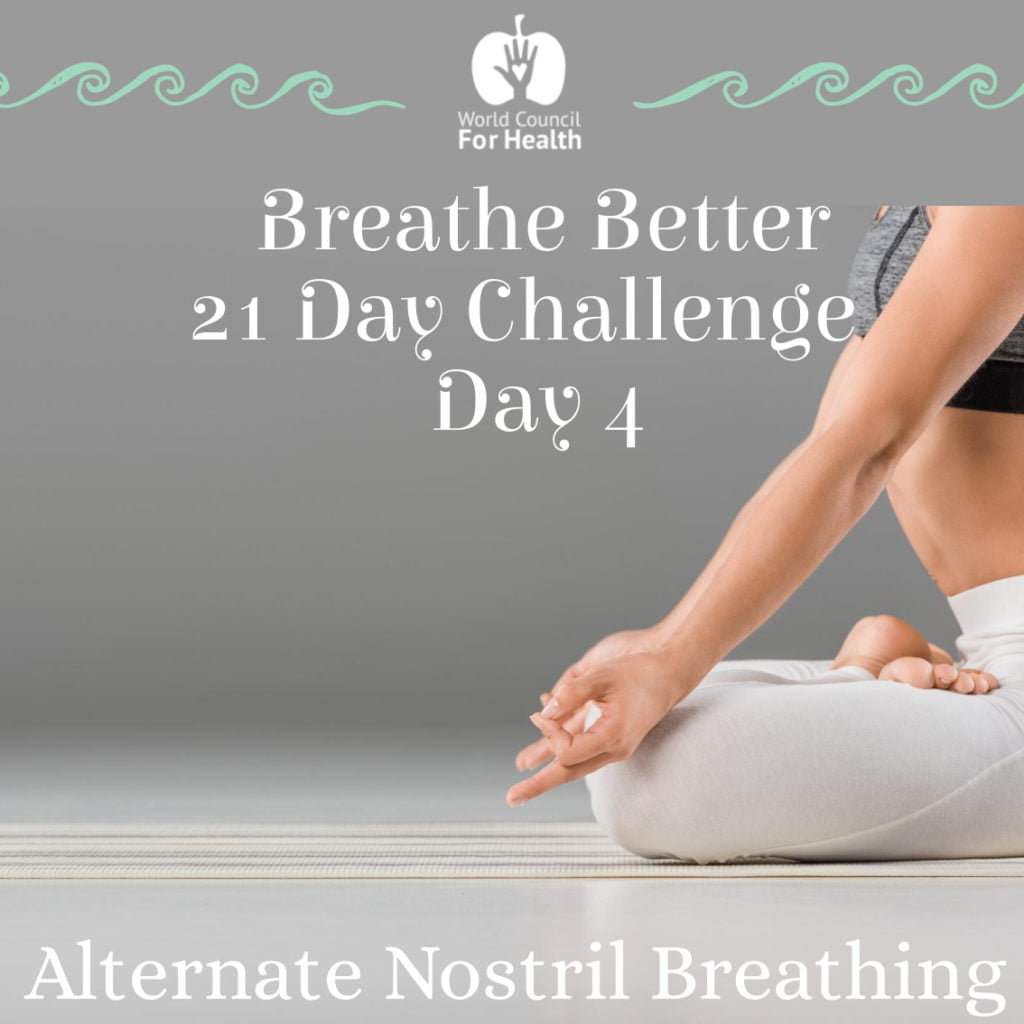
The Science: Alternate nostril breathing works under the understanding that breathing through the left nostril increases activity in the right side of your brain, while the right nostril increases activity in the left. While the right side of our brains is responsible for emotions and creativity, the left side is responsible for logic and language. By breathing through both sides equally, you help stimulate and balance both sides of your brain.
Preparation: Sit down with your legs crossed or in a chair if easier.
Technique:
- Place your left hand facing up on your left knee.
- Bring your right hand up to your face and place the second and third finger on your third eye.
- Breathe fully out, then close your right nostril with your thumb.
- Breathe in through your left nostril and then use your fourth finger to close the left nostril and open the right.
- This time breathe out fully through your right nostril and then in again through your right nostril.
- Close the right nostril and open the left and repeat breathing fully out and in with the left nostril.
- Continue until you feel more balanced.
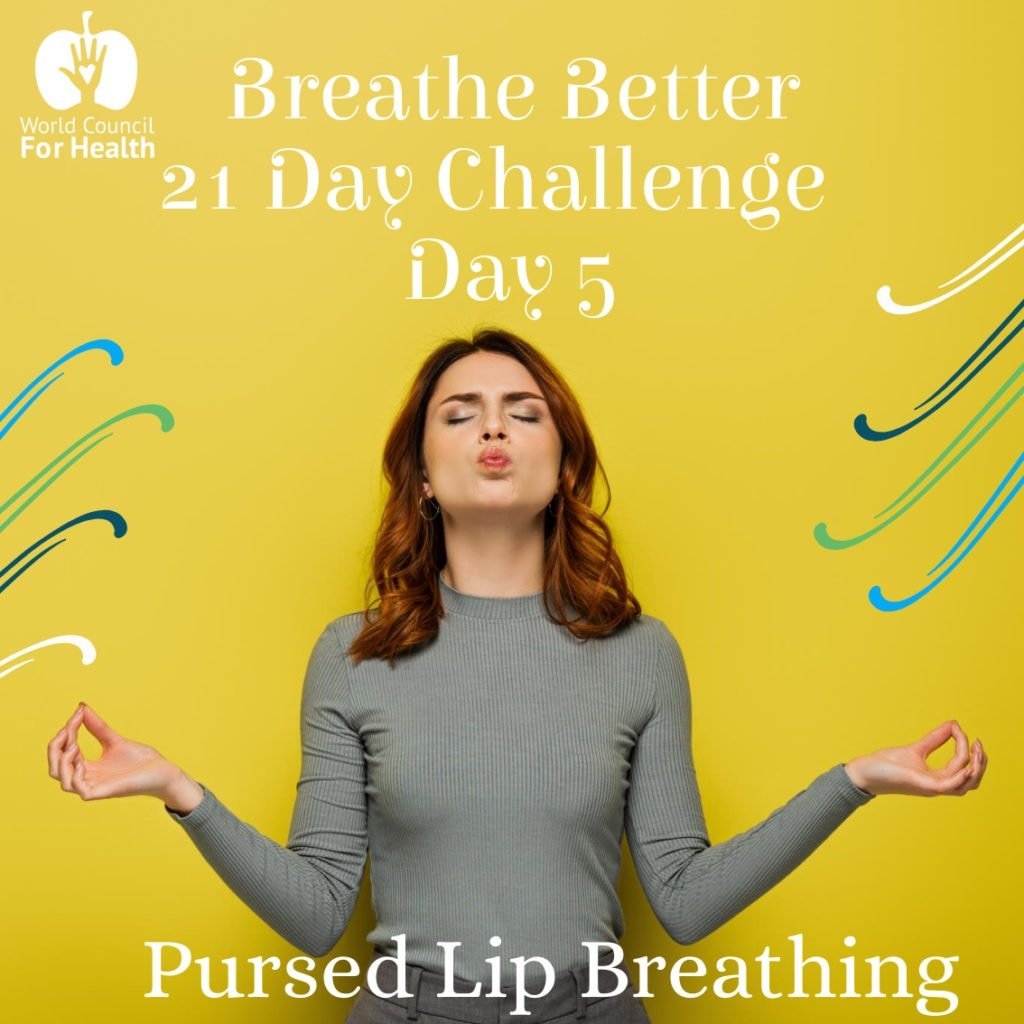
The Science: Pursed lip breathing has shown to strengthen the lungs with regular practice. This technique focuses on slowing your breaths and emptying stale air from your lungs. This is beneficial for those struggling with chronic lung diseases.
Preparation: Sit up straight or lie in a comfortable spot for this exercise.
Technique:
- Breathe in for a count of two through the nose
- Breathe out through pursed lips for a count of 4. This should always be double the in breath. So if you breathe in for 4 seconds breathe out for 8.
- Repeat as desired.
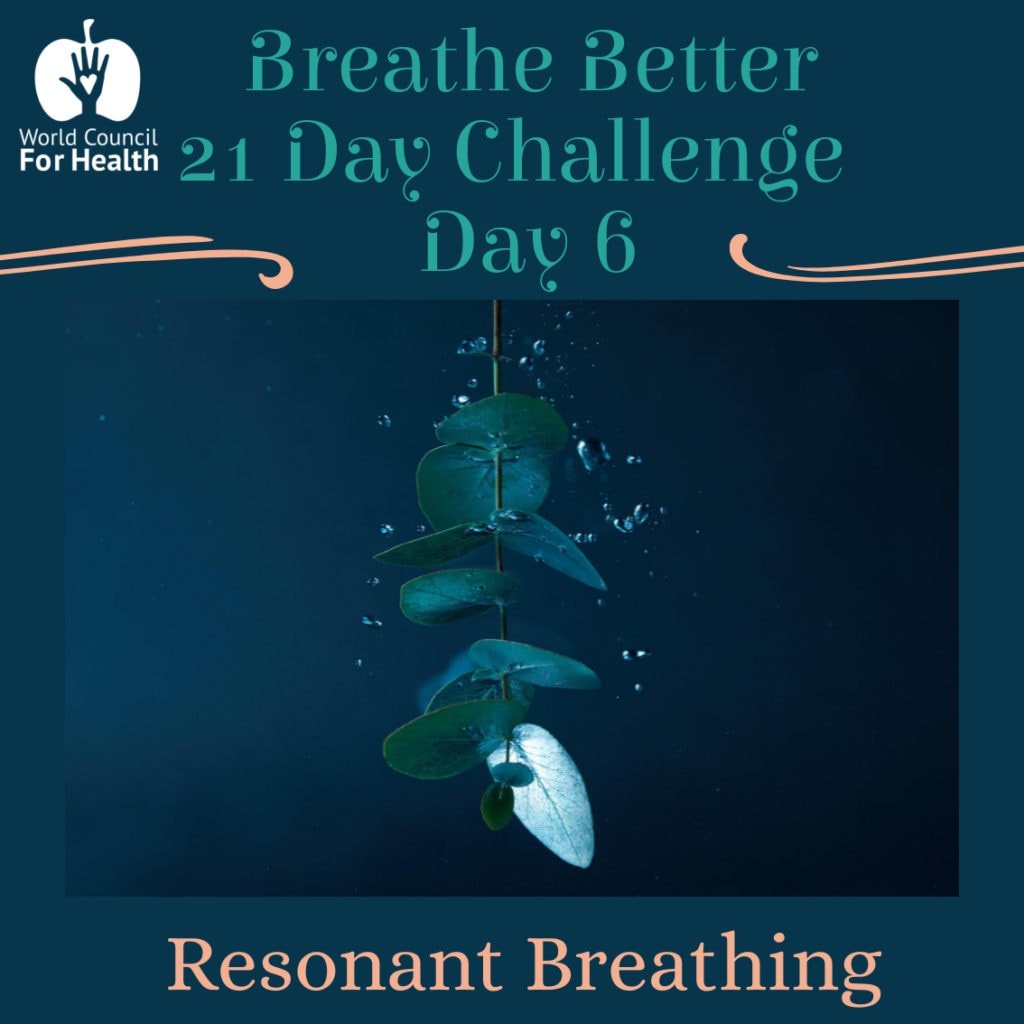
The Science: Studies have shown that resonant breathing improves heart rate and mood. Since resonant breathing is designed to help you breathe at 5 breaths per minute, this allows you to maximize your heart rate variability. As your heart rate is connected to your nervous system, this will also calm your nerves and can help reduce symptoms of depression.
Preparation: Get into a comfortable position of your choice with one hand on your stomach to ensure you are breathing into your stomach.
Technique:
- Breathe in for a count of 5.
- Breathe out for a count of 5.
- Repeat twice.
- Breathe in for a count of 6.
- Breathe out for a count of 6.
- Repeat twice.
- Continue lengthening breaths. Do not push yourself to the level where you start to feel lightheaded. We recommend stopping at 8.
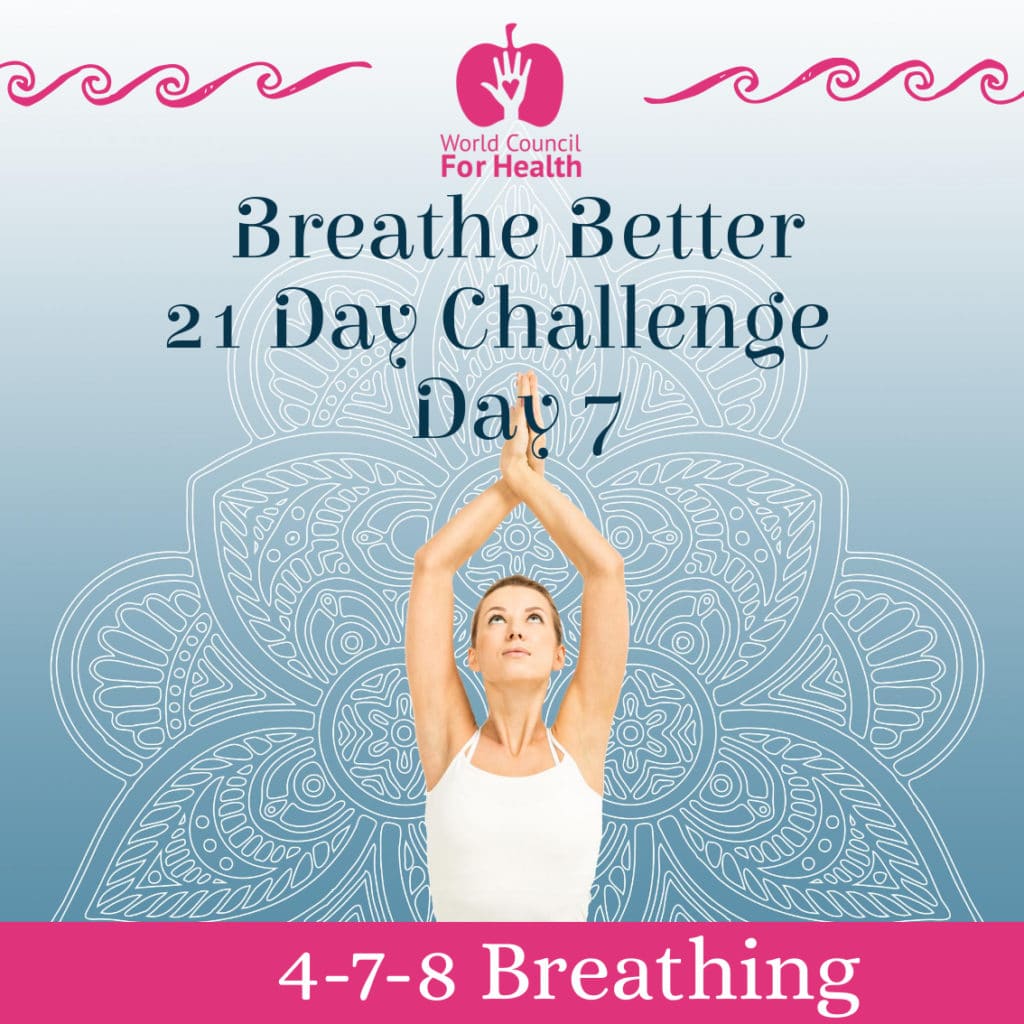
The Science: The 4-7-8 breathing technique is another relaxing technique. It has been successful in regulating the fight-or-flight response and helping to combat stress and anxiety. By forcing you to focus on your breaths rather than your worries, it helps you achieve a state of calm. Because the out breath is longer than the in breath you will find this technique helps you fall asleep more easily.
Preparation: Get into a comfortable position, ideally lying on your back with feet hip-width apart and arms by your side. You may need a blanket as your body temperature may drop.
Technique:
- Take a full breath in.
- As you part your lips, breathe out through your mouth while making a whoosh sound.
- Close your mouth and inhale through your nose to the count of 4.
- Hold your breath for a count of 7.
- Make another whooshing sound as you breathe out your mouth for a count of 8.
- Repeat these steps as much as desired.
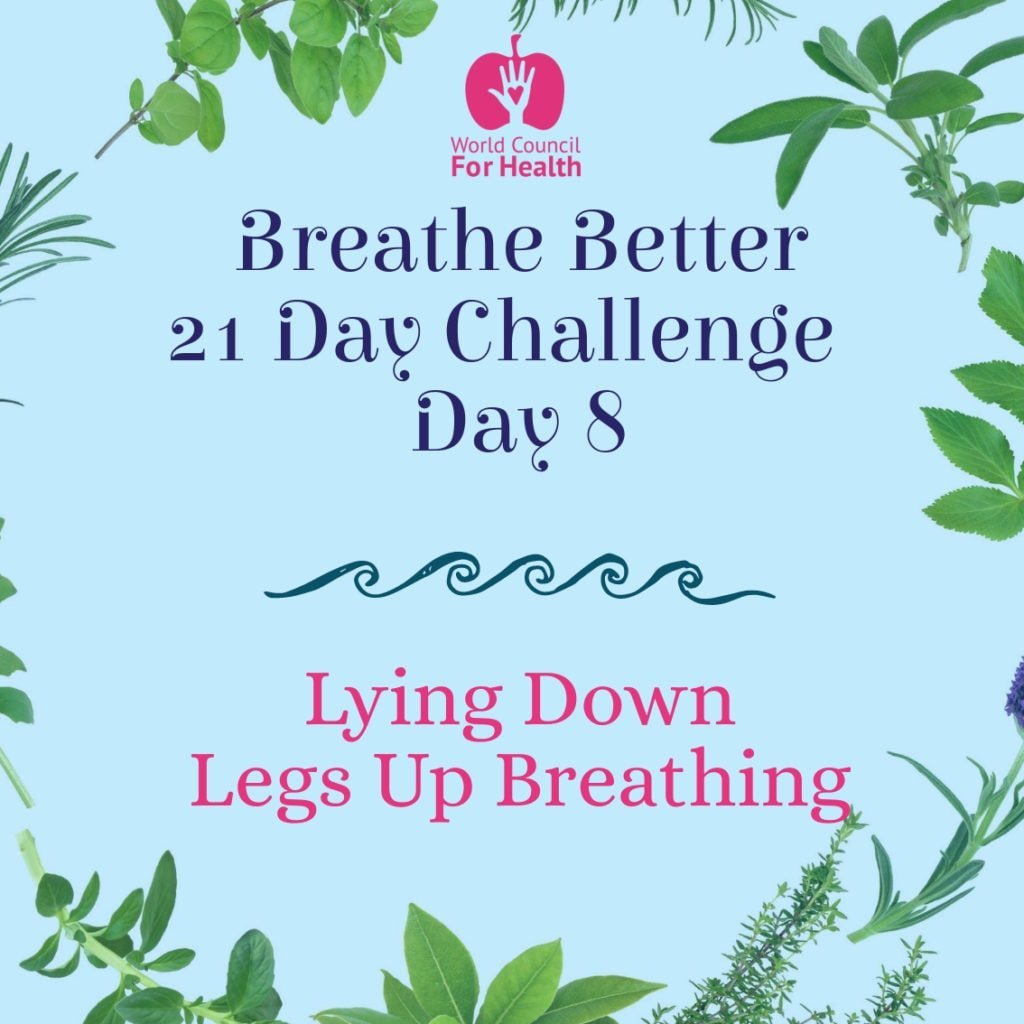
The Science: Lying down with the legs raised helps to relax the hips, pelvis and abdomen, which in turn helps to relax the sympathetic nervous system (SNS) ‘stress’ response, and switch on the parasympathetic nervous system (PNS) ‘rest, rejuvenate and relax’ response. This will help relax both the body and mind. The goal of this exercise is to allow the body-mind to move into a state of deep relaxation.
Preparation: Lie down on a fairly firm surface (eg floor) with your legs raised on a chair or high cushion. This allows the back, hip and abdominal muscles to fully relax. Place your arms on the floor at 45 degrees to the body, hands up, allowing the shoulders to full relax.
Technique:
- Close your eyes, bringing your attention inwards. Relax your body from head to toe.
- Make sure as you inhale you are breathing in and expanding from the lower abdomen. Breathe in through the nose and out through the mouth.
- Bring your attention to your lower abdomen, and gently expand the belly as you breathe in, expanding it out in all directions. Feel your back breathing into the floor, imagining your kidneys and back ribs expanding backwards into the ground.
- On the exhale, relax the whole body, let everything go, feeling the back and shoulders sinking into the ground. Let go deeply.
- Continue for some minutes. It’s ok if you fall asleep.
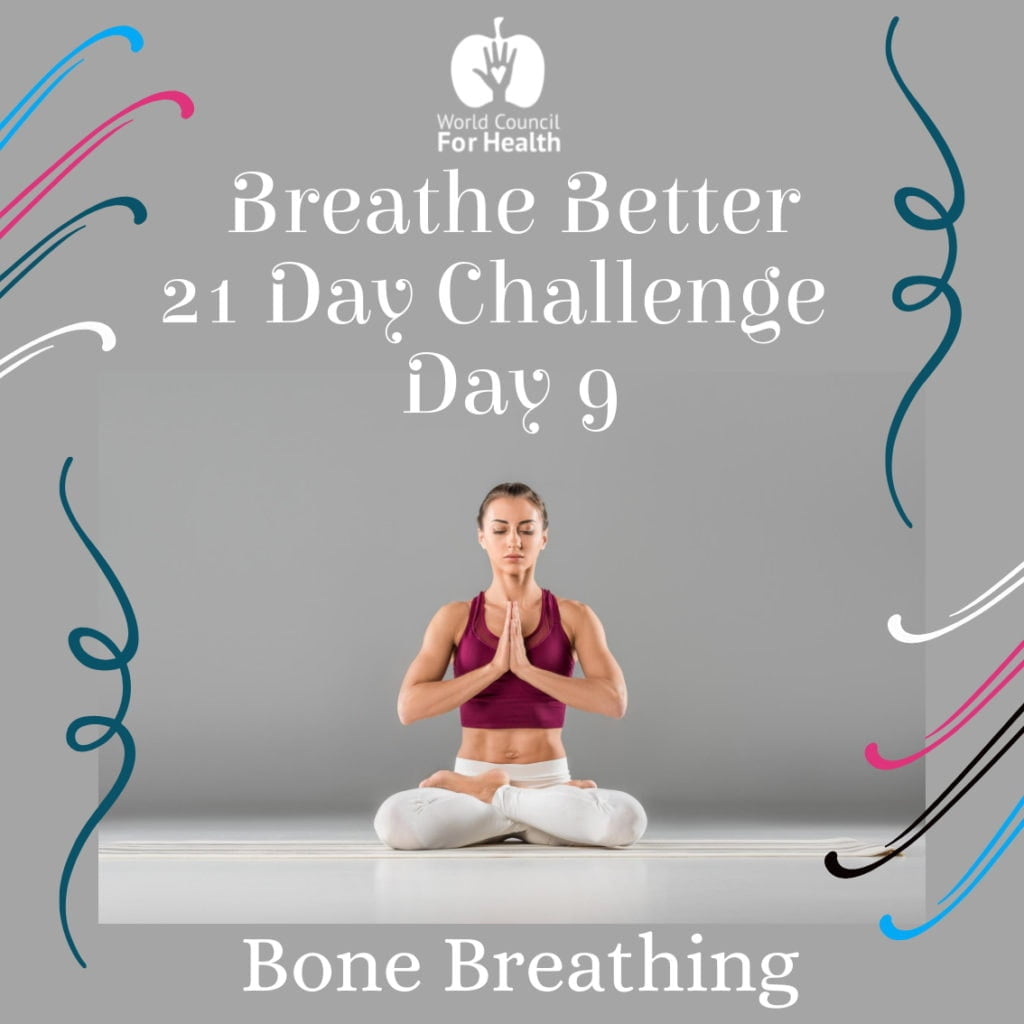
The Science: Bone breathing is an ancient Taoist technique for bringing deep relaxation into the muscles, body and mind. When practiced, Bone Breathing will allow you to quiet and clarify your mind, relax better and improve the natural capacity of your body to heal. Originating in Taoist monasteries in the mountain ranges of China some immemorial time ago, the Bone Marrow Nei-Kung, the discipline from which the Bone Breathing formula has been extracted, was originally designed to fortify the blood, strengthen the bones and raise the flow of Chi or life-giving force.
Preparation: Lie down on your back in a comfortable position.
Technique:
- With your eyes closed, do some abdominal breathing first to relax the body and mind.
- Slowly move through your body from head to toe, bringing your attention to the bones in each location (eg forehead, sides of the head, back of the head, cheeks, neck etc. all the way to the toes).
- As you breathe in, ‘expand’ your bones, as you exhale, imagine them relaxing. Bringing attention to the bones allows the muscles around the bones to relax, which in turn brings relaxation to the body-mind. It is ok if you fall asleep during this meditation.
For more information visit chineitsang.
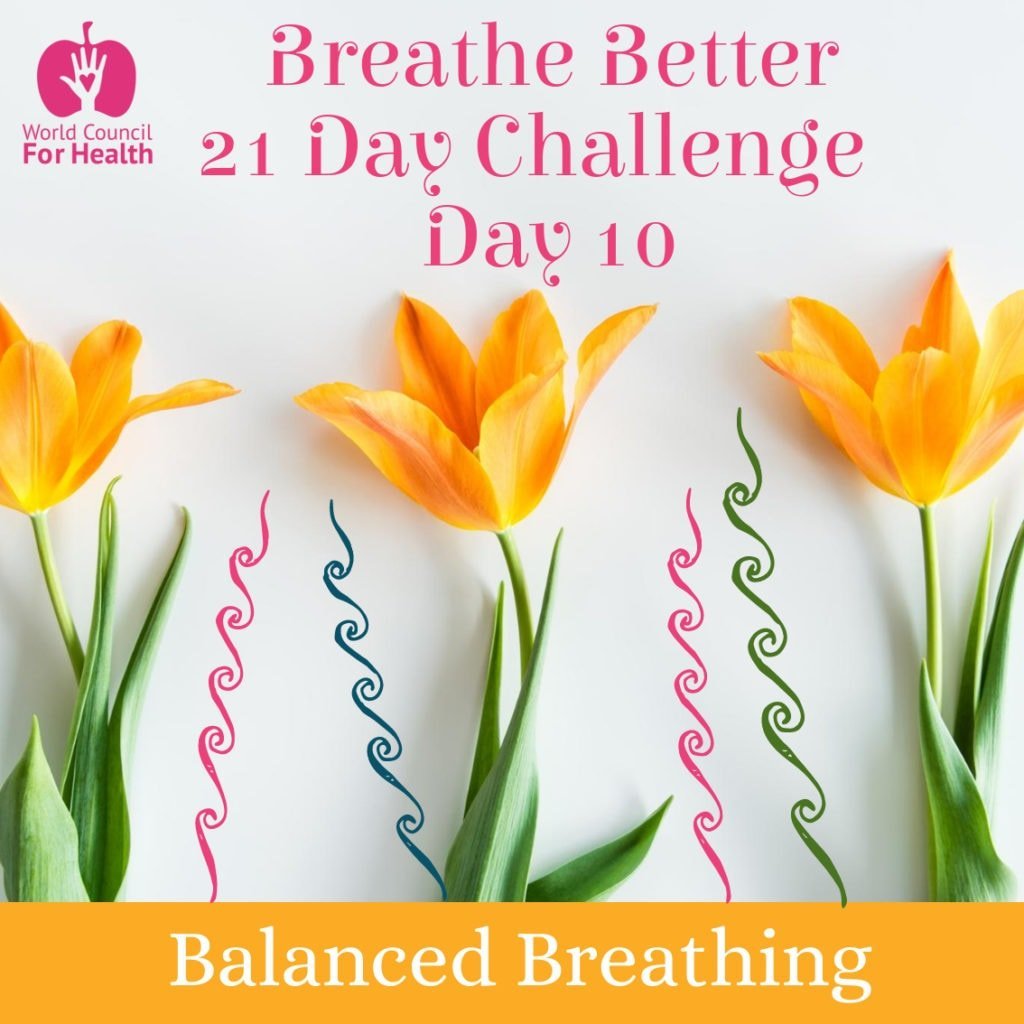
The Science: Balanced breathing was developed by mBIT (multiple brain integration) founders Marvin Oka and Grant Soosalu, which teaches how to synergistically engage the 3 brains (head, heart and gut) in order to tap into one’s innate higher wisdom. Balanced breathing helps to regulate the autonomic nervous system and access clear-thinking via the neocortex.
Preparation: Sit in a comfortable position.
Technique:
- Breathe in through the nose and out through the mouth.
- Inhale for the count of 6, then exhale for the count of 6, not pausing on either end of the in- or out- breath.
- It’s important to breathe from the belly, not the upper chest.
- Repeat for a couple of minutes.
- If you want you can exhale for slightly longer (8 seconds) because the exhalation stimulates the parasympathetic nervous system response (PNS) whilst the inhalation turns on the sympathetic nervous system response (SNS) – so breathing out for slightly longer will help switch on the PNS ‘relaxation’ response which helps to reduce stress and induce calm.
Download free guided audios here.
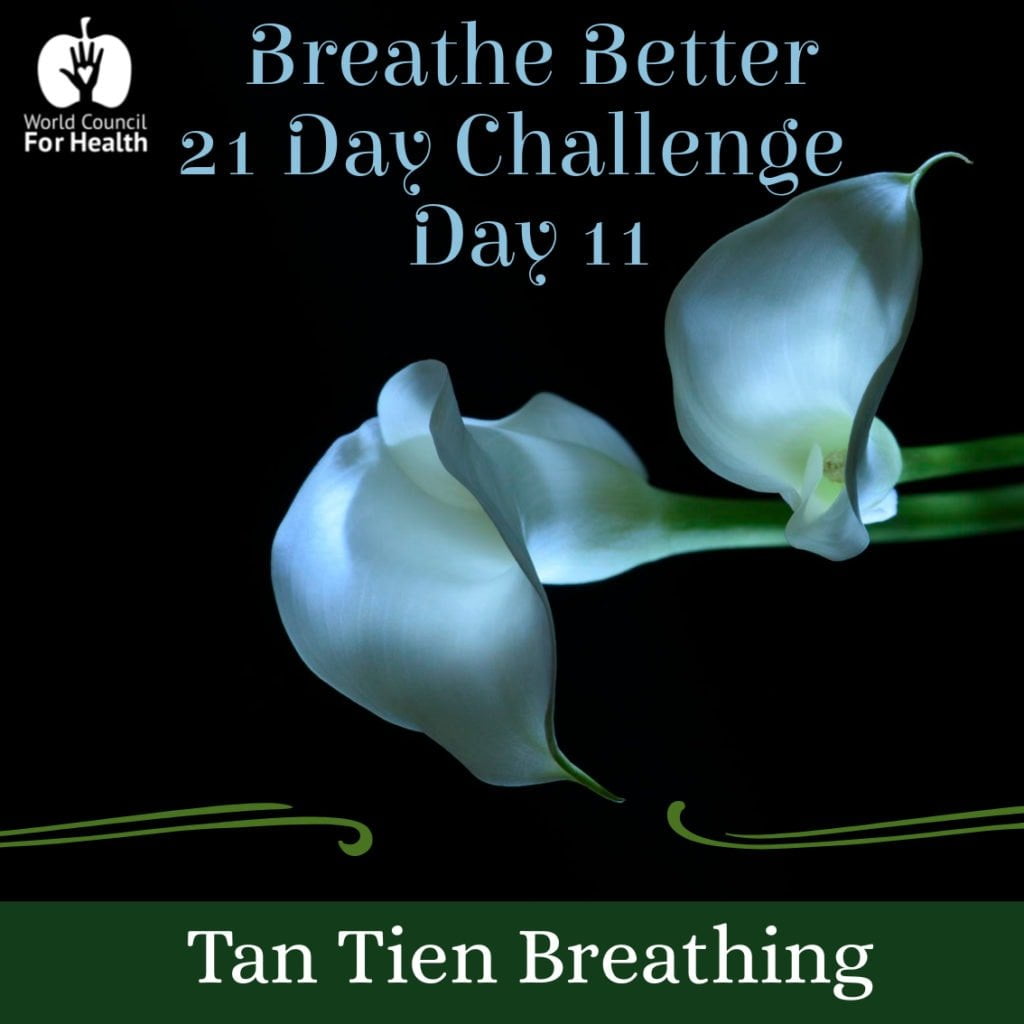
The Science: Tan Tien breathing is based on ancient Taoist wisdom and has been passed down for centuries by Qigong masters. The 3 ‘Tan Tiens’ are the 3 major energy storage (‘fields of elixir’) or ‘Qi burners’ in your body, located in the head, upper chest and lower abdomen. Tan Tien breathing focuses on the lower Tan Tien. Breathing into the lower abdomen brings your focus of attention out of the head (‘monkey mind’) into the body, quite literally into your anatomical centre at the navel, helping to ‘centre’ and calm the body-mind.
Preparation: Sit comfortably and gently close your eyes. Lift your head up from ‘Baihui’ (the point on the top of your head behind the crown) but keep the shoulders relaxed and back gently straight.
Technique:
- Bring your attention to a point behind and just below your navel. Breathe in through your nose, and out through the mouth.
- On the inhale, expand the lower abdomen (belly) in all directions, as if you are blowing up a balloon inside your belly, with the focus of attention inside the lower abdomen. It’s important to breathe gently.
- On the exhale, allow everything to relax
- Keep your attention on your navel area, and if the mind wanders, bring it back to this point. This practice will help develop your mind focus.
- Breathe like this for as long as you like, you can do it for up to an hour.
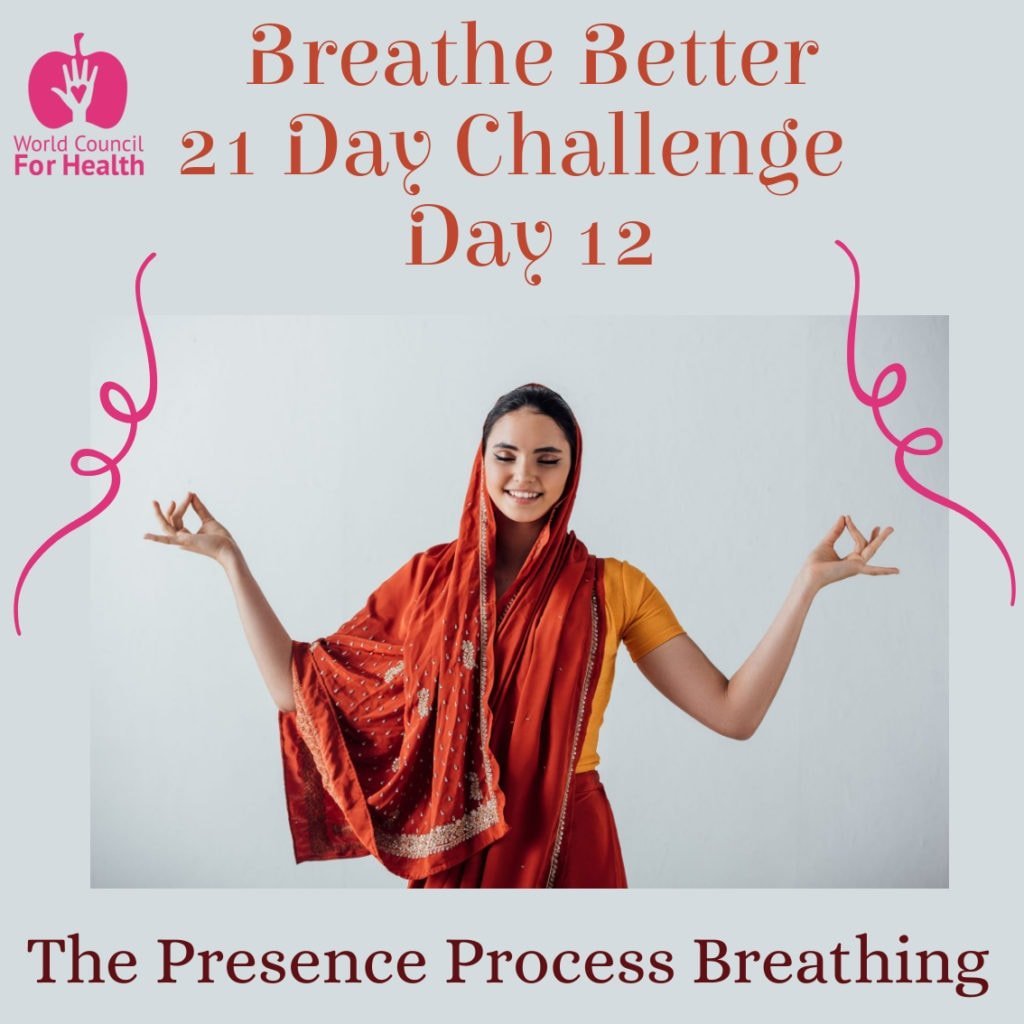
The Science: The Presence Process was developed by Michael Brown. It is a technique designed to bring one into the present moment, which restores a sense of inner peace and harmony. It is very useful to use when one finds oneself in a stressful situation, as it helps you to accept what is happening. The Presence Process Breathing is part of the complete Presence Process technique, and to learn it properly it is recommended to read the book or do the full training.
Preparation: Sit comfortably. Make sure you are breathing abdominally, breathing in through the nose and out through the mouth. You are going to be saying the following sentence to yourself together with a breathing rhythm: ‘I am here now in this’.
Technique:
- Breathe in and say internally in your head ‘I’.
- Breathe in and say internally in your head ‘am’.
- Breathe out and say internally in your head ‘here’.
- Breathe in and say internally in your head ‘now’.
- Breathe out and say internally in your head ‘in’.
- Breathe in and say internally in your head ‘this’.
Notice the effects on how saying this sentence along with the breathing rhythm helps to calm the mind, and body. When you breathe better, you feel better.
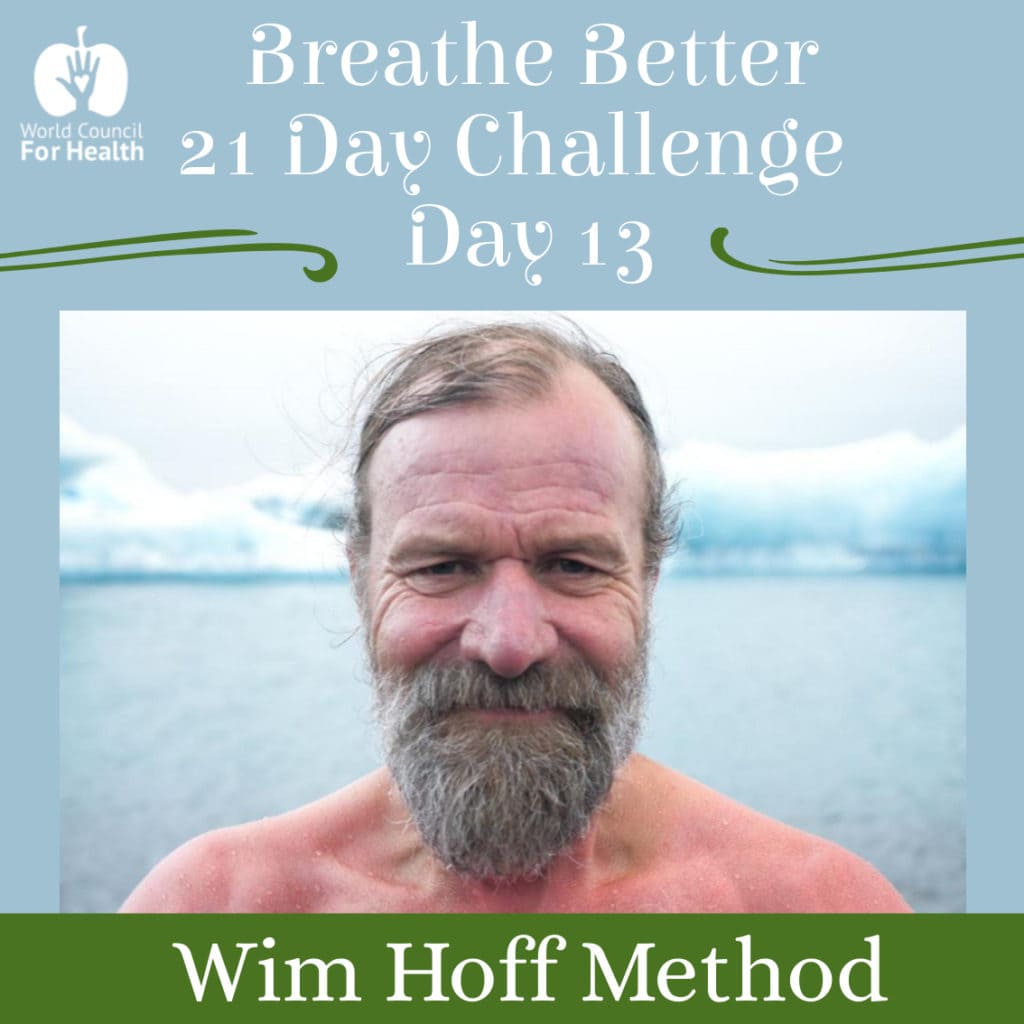
The Science: Wim Hoff is a motivational coach from the Netherlands who shot to fame by combining breathing, cold water therapy and commitment exercised to help people connect more deeply to the body. The following is a taster of one of the beginner breath work techniques. This is to be repeated three times.
Technique:
- Take in a strong inhalation through the nose.
- Let out a relaxed exhalation through the mouth.
- Repeat for 30 breaths.
- On the 30th breath, exhale to 90 percent and hold for as long as you can.
- When you feel your body really needs to take a breath, inhale fully and hold for 15 seconds before releasing.
Top Tips for those new to the Wim Hoff method:
- If you are unable to breathe through your nose due to congestion or other reasons, mouth breathing is OK.
- Consciously relax your jaw and the muscles in your neck and upper shoulders. Otherwise, you may experience tension headaches.
- Let go of any competitive mindset. It doesn’t matter how long you hold the 30th breath.
- Use the breath retention phase to witness your own thoughts and your body’s response.
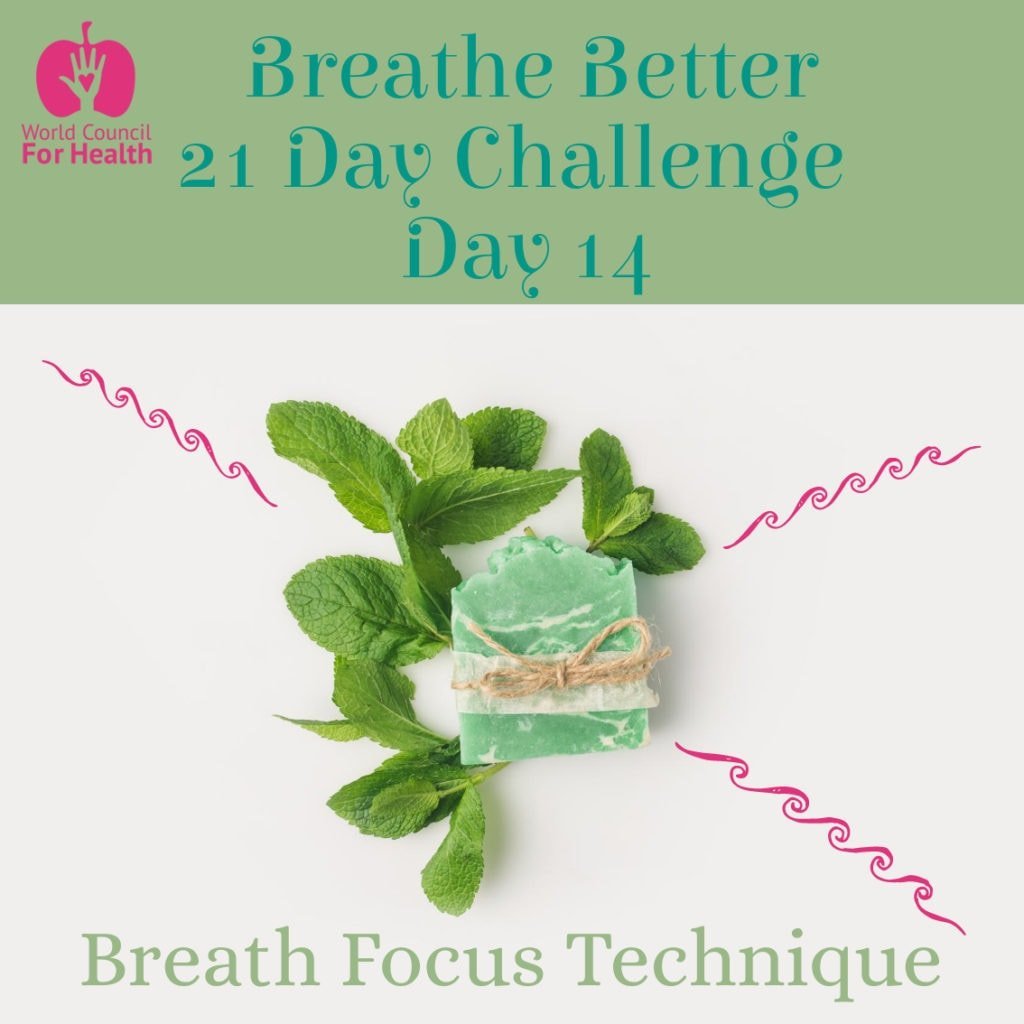
The Science: There is research that supports the idea of the law of attraction when it comes to positive thinking and visualization. That by visualizing situations around you that would make you happy, those situations are more likely to come true. This 2010 review found that visualizing your desires increased the likelihood of them becoming a reality.
Preparation: This deep breathing technique uses imagery or specific words. You can choose a focus word that makes you smile, feel relaxed, or that is neutral to think about-peace, let go, relax. It can be any word that suits you to focus on and repeat through your practice. Use images that make you feel calm-a lake, a beautiful flower, the sea, etc. Places in nature tend to do the trick. As you build up your breath focus practice you can start with a 10-minute session. Gradually increase the duration until your sessions are at least 20 minutes. Sit or lie down in a comfortable place.
Technique:
- Bring your awareness to your breaths without trying to change them.
- Alternate between normal and deep breaths a few times. Notice any differences between normal breathing and deep breathing. Notice how your abdomen expands with deep inhalations.
- Note how shallow breathing feels compared to deep breathing.
- Practice your deep breathing for a few minutes.
- Place one hand below your belly button, keeping your belly relaxed. Notice how it rises with each inhale and falls with each exhale.
- Let out a loud sigh with each exhale.
- Begin the practice of breath focus by combining this deep breathing with imagery and a focus word or phrase that will support relaxation.
- Imagine that the air you inhale brings waves of peace and calm throughout your body. Mentally say, “Inhaling peace and calm.”
- Imagine the air you exhale washes away tension and anxiety. Say to yourself, “Exhaling tension and anxiety.”
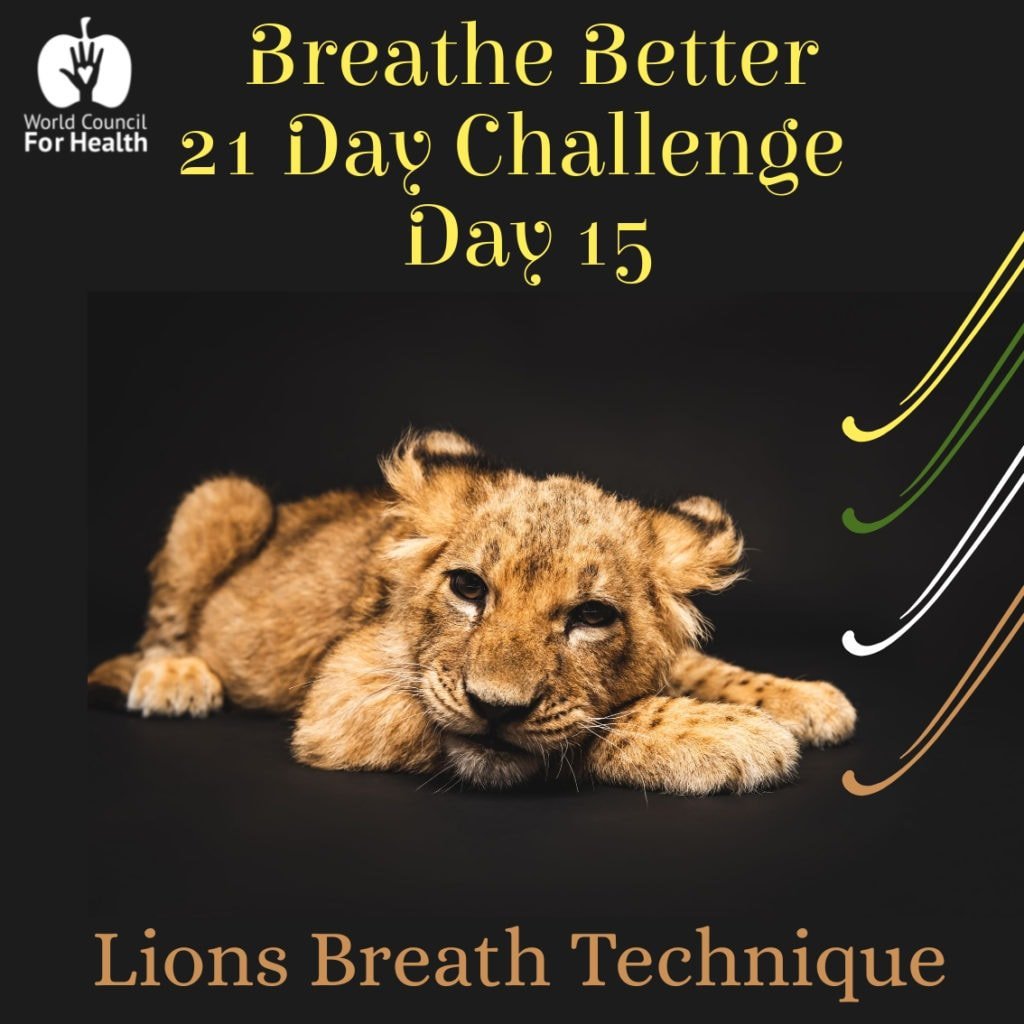
The Science: Lion’s breath is an energizing yoga breathing practice that is said to relieve tension in your chest and face. It has been found to be particularly helpful to singers as it stimulates the vocal cords and diaphragm as well as people with speech impairments.
Preparation: Come into a comfortable seated position. You can sit back on your heels or cross your legs in front of you.
Technique:
- Press your palms against your knees with your fingers spread wide.
- Inhale deeply through your nose and open your eyes wide.
- At the same time, open your mouth wide and stick out your tongue, bringing the tip down toward your chin.
- Contract the muscles at the front of your throat as you exhale out through your mouth by making a long “ha” sound.
- You can turn your gaze to look at the space between your eyebrows or the tip of your nose.
- Do this breath 4 to 5 times.
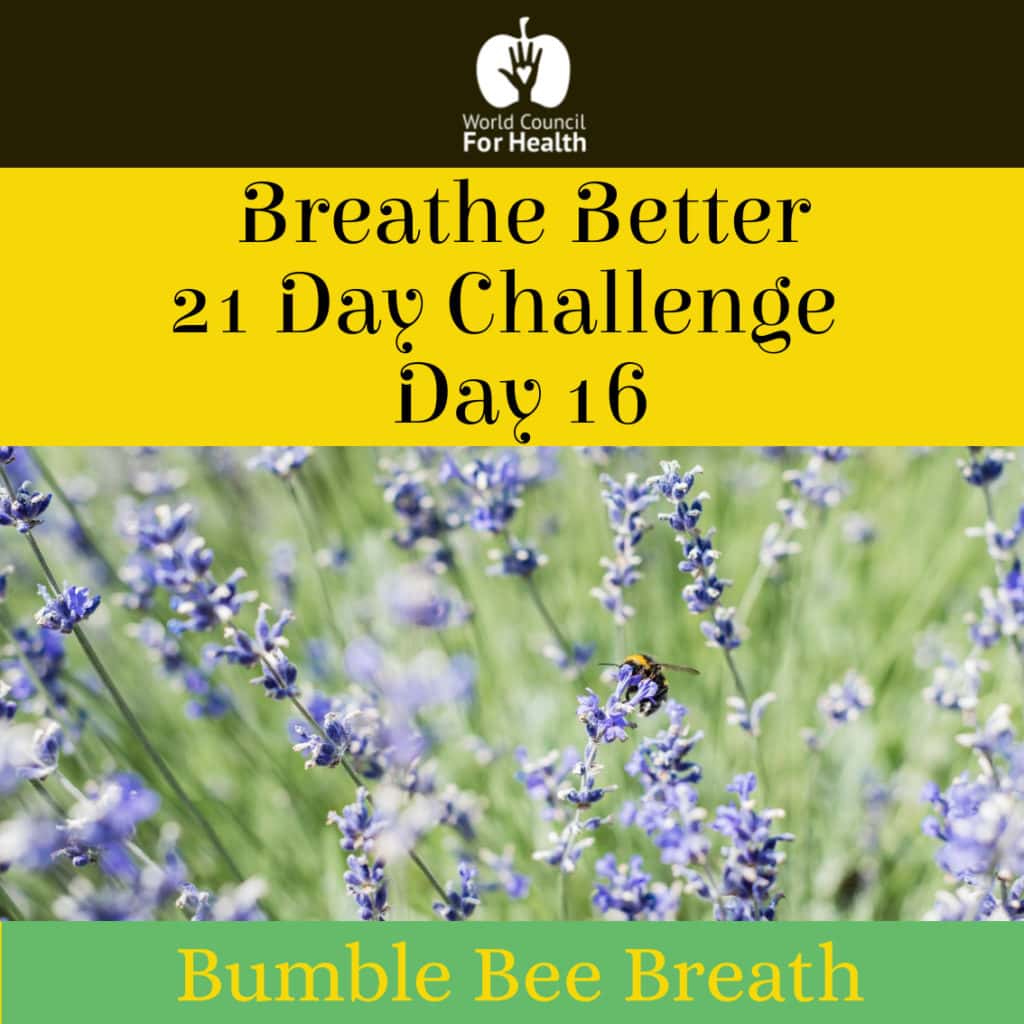
The Science: This breathing technique is a really soothing one that creates a lovely sensation around the forehead. It aids in relieving anxiety, frustration and anger. Before starting locate the tragus cartilage that makes up part of your ear.
Preparation: Find a comfortable position.
Technique:
- Close your eyes and relax your face
- Place your first finger of each hand on the tragus cartilage of each ear.
- Inhale and at the top of the inhale press your tragus cartilage down to cover your ear.
- Keeping your mouth closed make a humming sound as you exhale.
- Continue for as long as comfortable. Try 5-10 breaths.
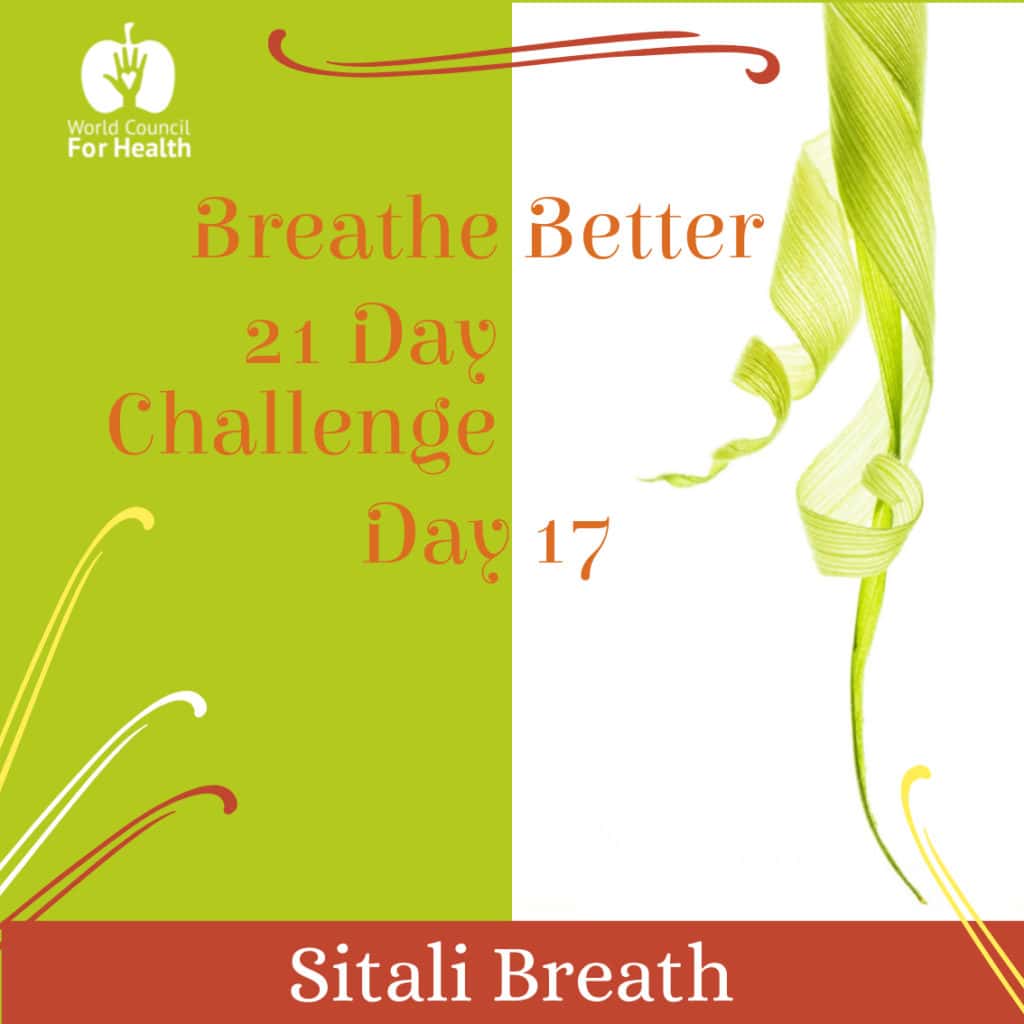
The Science: Sitali Breath Practice is designed to lower the temperature of the body and relax the mind.
Preparation:
Find a comfortable chair to sit in and keep a straight spine. You may want to choose an unpolluted space as you will be breathing in through your mouth.
Technique:
- Stick out your tongue and curl the edges together if you can. If you can’t curl your tongue, you can purse your lips instead.
- Inhale for a count of 5 through your mouth.
- Exhale through your nose for a count of 5.
- Repeat for 2-5 minutes lengthening the breath if it feels right.
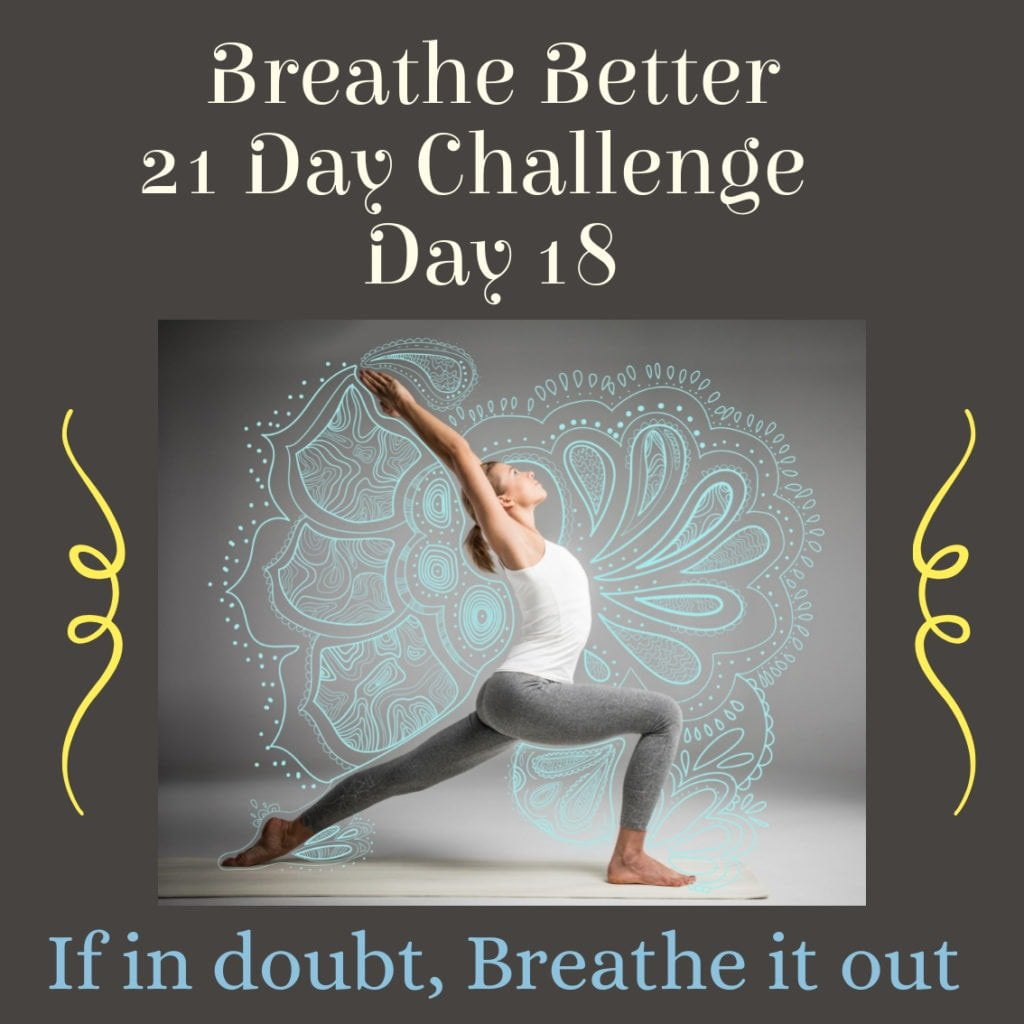
When you’re in a stressed or anxious state, your thoughts tend to accelerate and your inner voice can get louder or begin to catastrophise. So it may take a few rounds of “If in Doubt, Breathe It Out” technique to calm yourself. You may wish to add some positive self-talk too!
Preparation: Sit in a comfortable position with a straight back and slowly breathe all of the air out of your lungs.
Technique:
- Breathe in through your nose for a count of count if four, feeling your belly rise.
- Hold your breath for a count of four, keeping clam and still.
- Breathe out through your mouth for a count of eight. Drop your shoulders, relax your face, your jaw, behind your eyes, even your forehead.
- Repeat as much as you need until you feel relaxed.
This excerpt was taken from Breathe In Breathe Out by author and founder of Breathpod Stuart Sandeman.
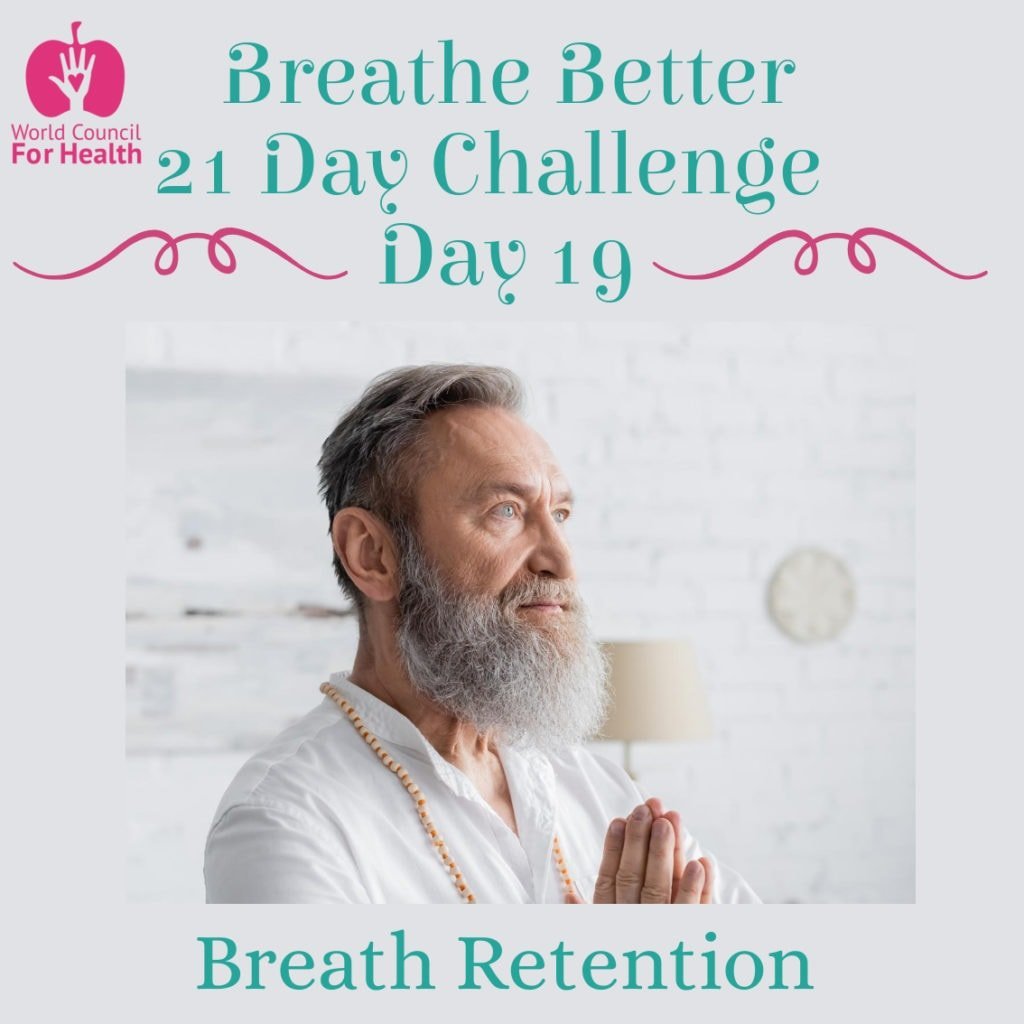
The Practice: This technique involves deliberately inhaling, holding, and exhaling the breath for specific amounts of time. It can improve lung capacity, oxygenate the blood, and enhance focus. As you practice, notice any internal or external sensations. Then, without trying to change anything, focus on settling down.
Preparation: Stand, sit or lie in a comfortable position, in a quiet space where you won’t be disturbed. Rest your hands by your side or on your knees. You can do this with your eyes open or closed.
Technique:
- Relax your shoulders, neck and head and breathe in and out through your nose, become aware of the rhythm of your breath.
- Begin to deepen your breath, taking a long inhale and being sure to exhale every last bit of breath. Notice how the breath feels in the nose and the way your body moves with every inhalation and exhalation.
- On an inhale, notice when your lungs reach full capacity, and pause for a moment before exhaling fully. As you take your next inhale count the length of your breath in seconds.
- Pause at the end of your inhale for the same number of seconds you inhaled for, and exhale for the same number of seconds as well.
- Repeat this cycle a couple of times ensuring the ratio is even for the inhale, hold and exhale.
- As you retain the breath, visualise oxygen travelling around your body, sending life to all of your cells.
- Repeat the practice for up to 5 minutes. Give yourself a few moments of stillness afterward before returning to your day.
Advanced: Once you become practiced at this, gradually increase the length of the breath in seconds. The practice should always feel effortless and free from strain so don’t push yourself too hard.

The Practice: This technique helps you learn to unconsciously relieve physical tension and stress in the body. So many of us are holding tension throughout the day without realising it. Bringing this into a practice can help us recognise the feeling and release the stress more quickly. Bringing this practice together with the breath allows us to get familiar with using every exhale as an excuse to let go.
Preparation: Lie on your back for this practice. We will work our way down with the following body part groups. First the face and head; second the neck and jaw; third the shoulders, arms, and hands; fourth the abdomen, buttocks, and pelvis; and fifth the legs and feet.
Technique:
- Inhale and tighten the muscles near the top of your head and face for 4-10 seconds.
- Exhale fully quickly and relax the tightened muscles at the same time.
- Resume regular breathing for a few breaths.
- Inhale and tighten the next group of muscles down (neck and jaw). Hold the inhale for 4-10 seconds.
- Exhale fully quickly and relax the tightened muscles at the same time.
- Resume regular breathing for a few breaths.
- Continue working your way through the sequence for the muscle groups mentioned in the preparation.
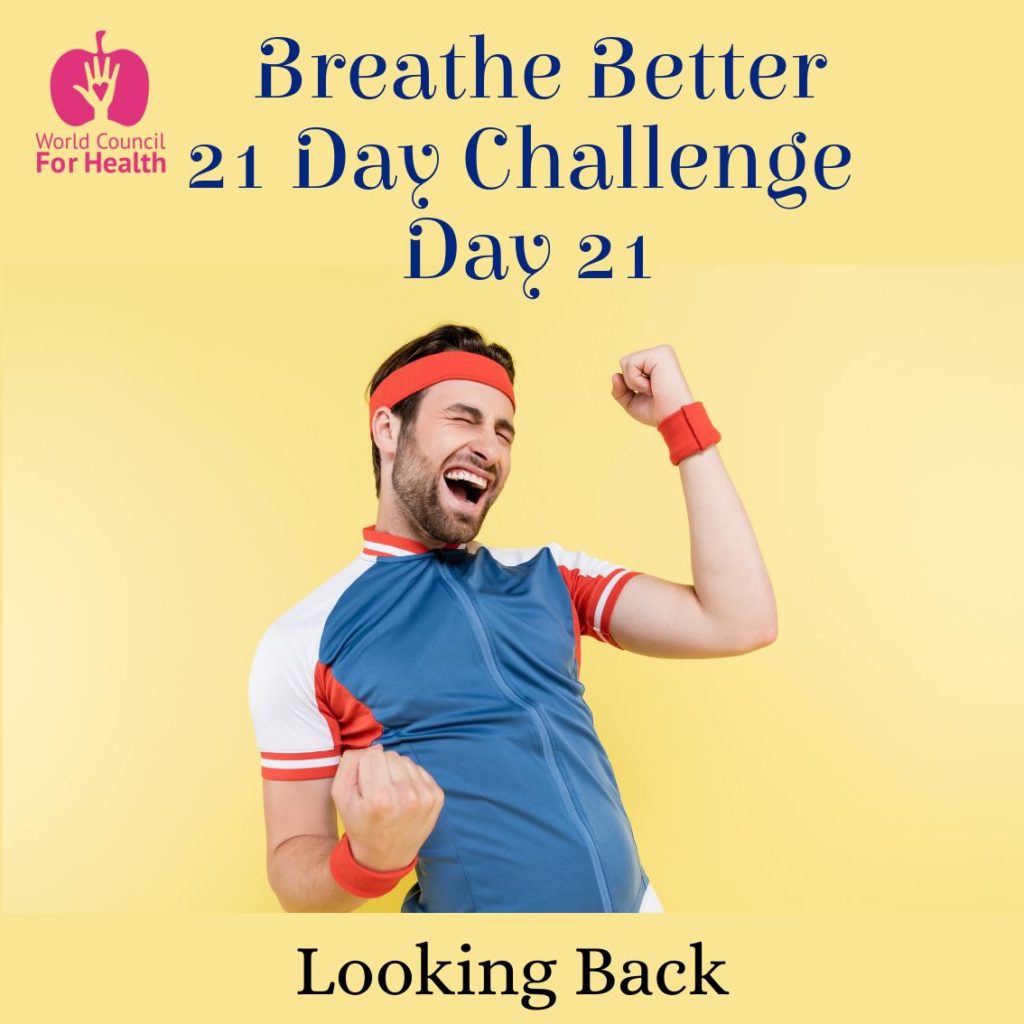
Congratulations! You’ve made it to the final day of the 21-Day Breathe Better Challenge!
Today, we invite you to repeat your favorite breathing technique and share it with a friend.
